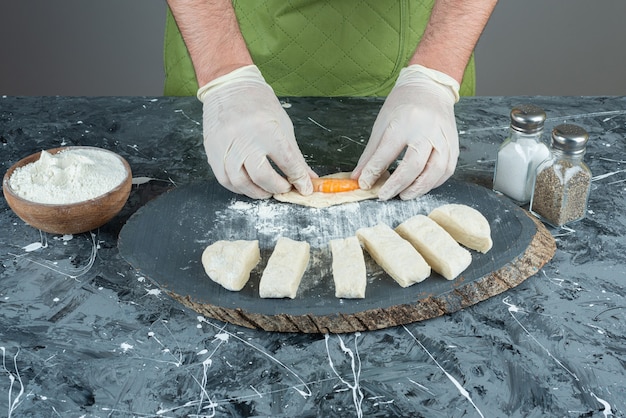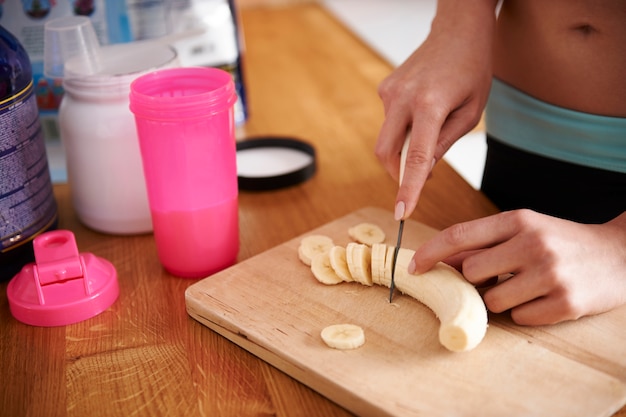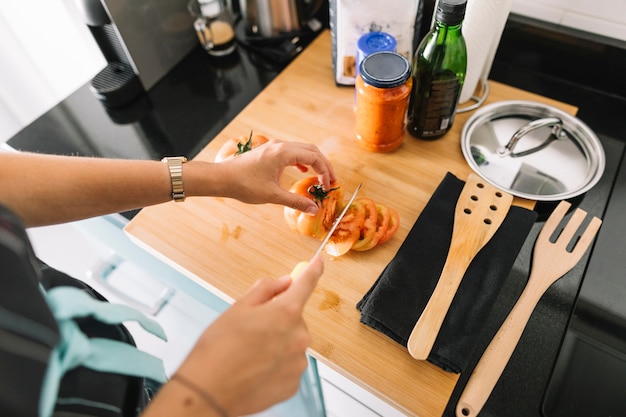Right, let's talk dango. These delightful little Japanese mochi balls are an absolute treat, and I'm here to share my tips and tricks for making them at home. I've always been fascinated by Japanese cuisine, and dango have always held a special place in my heart. They're just so darn cute and chewy! From the vibrant colours to the sweet, slightly sticky texture, they're a real treat for the senses. So, let's dive into the world of dango-making and see what we can conjure up in our kitchens.
(Part 1) Dango: A Taste of Japan

Dango are these adorable little balls made from mochi flour, a type of glutinous rice flour. They're often served with a sweet sauce, like mitarashi sauce (made with soy sauce, sugar, and mirin), or a light dusting of kinako (roasted soybean flour). But let me tell you, the possibilities are endless! You can get creative with different flavours and toppings. Think matcha dango, strawberry dango, even chocolate dango! The beauty of dango is that they're incredibly versatile.
A Brief History of Dango
Dango have a rich history in Japan, tracing back to the Heian period (794-1185). They were originally made with rice flour and were considered a sacred food, often offered to the gods. Over time, they evolved into a popular snack and dessert, enjoyed by people of all ages. It’s like a sweet tradition that’s been passed down through generations, a testament to their enduring appeal.
The Symbolism of Dango
Dango also hold a special place in Japanese culture, symbolizing various aspects of life and tradition. For example, "kushi dango" (skewered dango) are a common sight at festivals and are often eaten during the summer months, representing a sense of celebration and joy. They are also believed to bring good luck and prosperity, making them a popular choice for celebrations and special occasions. It’s like a little bit of good fortune in every bite!
(Part 2) Ingredients and Tools You’ll Need

Now, let's get down to the nitty-gritty and talk about what you'll need to whip up a batch of these delightful dango. The ingredient list is surprisingly short, and the tools you'll need are pretty basic. It's a recipe that even a novice cook can tackle with ease.
Essential Ingredients
- Mochi flour: This is the star of the show! It's the key ingredient that gives dango their unique chewy texture. You can usually find it at Asian grocery stores or online. If you're having trouble finding it, you can also order it online.
- Water: Just plain ol' water is all you need to mix the mochi flour. It's simple and readily available.
- Sugar: This is for sweetening the dango dough. You can adjust the amount to your liking. I usually start with a tablespoon or two and then add more depending on how sweet I want them to be.
- Optional: You can add other ingredients to your dango dough, like matcha powder for a vibrant green hue and a subtle earthy flavour, cocoa powder for a rich chocolatey touch, or even chopped nuts for a delightful crunch. Feel free to experiment and see what you like!
Tools
- Mixing bowl: A good-sized bowl for mixing the dough. Make sure it's big enough to comfortably hold the dough and allow for easy stirring.
- Spoon or spatula: For stirring the dough. I prefer using a spatula as it allows me to scrape the sides of the bowl and ensure the dough is well-combined.
- Small pot: For boiling the dango. You’ll want a pot big enough to hold enough water to cover the dango while they cook, ensuring they cook evenly.
- Sieve: To sift the mochi flour for a smooth texture. This isn’t absolutely necessary, but it helps create a lighter, airier dango. It's a small step that can make a big difference in the final product.
- Chopsticks: These come in handy for shaping the dango. You can also use a small spoon, but chopsticks are the more traditional way to do it and offer a nice level of control.
- Baking sheet: For cooling the dango after boiling. This helps prevent them from sticking together and ensures they cool evenly.
- Optional: You can also get a dango mold if you want to make fancy-shaped dango. These molds come in various shapes and sizes, adding a creative touch to your dango-making journey.
(Part 3) Making the Dango Dough

Now, let's get our hands dirty! It’s time to make the dango dough. It’s a pretty straightforward process, but there are a few tips I’ve learned along the way to ensure a smooth and successful dough-making experience.
Step-by-Step Instructions
- Gather your ingredients: Make sure you have all the ingredients ready and measured out. It’s always a good idea to have everything prepped before you start to make the dough. It’s like setting the stage for a culinary performance!
- Sift the mochi flour: This step is optional, but I highly recommend it. Sift the mochi flour into your mixing bowl. This helps create a smoother, lighter dough. It’s like giving the dango a little bit of air to breathe.
- Add water and sugar: Gradually add the water and sugar to the mochi flour, while stirring with a spoon or spatula. You want to add the water slowly and mix well to ensure there are no lumps. It’s like a delicate dance between the ingredients, ensuring everything blends seamlessly.
- Knead the dough: Once you have a cohesive dough, it’s time to knead it. This helps develop the gluten and makes the dango more elastic. Knead the dough for a few minutes until it is smooth and elastic. It’s like giving the dough a little massage to bring out its best qualities.
- Let the dough rest: Cover the dough with a damp cloth and let it rest for about 15 minutes. This allows the dough to relax and become more pliable. It makes it easier to shape the dango. It’s like giving the dough a little break to recover and become more malleable.
Tips for Making the Dough
- Don’t over-knead: If you knead the dough for too long, it will become tough and chewy. Aim for a dough that is smooth and elastic but not overly sticky. It’s like finding the sweet spot in dough-kneading, a balance of texture and elasticity.
- Add water gradually: It’s better to add water a little at a time rather than all at once. This helps prevent the dough from becoming too wet or too dry. It’s about gradual incorporation, like a slow and steady dance.
- Use your hands: Once the dough is almost combined, it’s often easier to knead it with your hands. This helps you feel the texture of the dough and ensure it’s the right consistency. It’s like getting a tactile sense of the dough, understanding its nuances.
(Part 4) Shaping the Dango
Ok, the dough is ready. Now, the fun part: shaping the dango! This is where you can get creative and make different shapes, letting your imagination run wild.
Traditional Dango Shapes
The most common dango shape is a round ball. This is usually achieved by rolling the dough into small balls with your hands or using chopsticks. It’s a classic and simple shape that highlights the chewy texture of the dango. But, there are also other traditional shapes like:
- Kushi dango: These dango are skewered on bamboo skewers and usually come in three colours - white, pink, and green. The pink colour is achieved by adding red bean paste, and the green colour is often achieved with matcha powder. It’s like a miniature rainbow of dango, visually appealing and bursting with flavour.
- Mitarashi dango: These dango are often shaped as elongated balls, almost like a small sausage. They are then dipped in a sweet mitarashi sauce, which adds a delightful salty-sweet flavour. It’s a combination of textures and flavours, a symphony for the senses.
Getting Creative with Shapes
I love to experiment with different shapes and sizes. I've tried making heart-shaped dango for Valentine's Day, star-shaped dango for Christmas, and even flower-shaped dango for special occasions. It’s like adding a personal touch to the dango, making them more special for the occasion. You can also use dango molds to create different shapes, like squares, triangles, or even characters! Let your imagination guide you, and have fun with the process!
(Part 5) Boiling the Dango
Time to bring those dango to life! Now, you’ll need to boil them in water until they are cooked through. It’s a simple process, but there are a few things to keep in mind to make sure they cook perfectly. It’s like a culinary baptism, transforming the raw dough into a delicious treat.
Boiling the Dango: Step-by-Step
- Bring a pot of water to a boil: Fill a pot with enough water to cover the dango, and bring it to a rolling boil over medium-high heat. You want to make sure the water is boiling before adding the dango. It’s like setting the stage for the dango to take their culinary plunge.
- Add the dango: Carefully drop the dango into the boiling water. You want to make sure the dango don’t stick together. I usually add them a few at a time. It’s like gently introducing them to their boiling bath.
- Cook until they float: Let the dango cook for about 5-7 minutes, or until they float to the surface. This means they are cooked through and ready to be enjoyed. It’s a sign that they are ready to emerge from their watery transformation.
- Remove the dango: Use a slotted spoon or strainer to remove the dango from the boiling water. Be careful not to break them, as they can be a little delicate. It’s like carefully rescuing them from their boiling bath.
- Rinse the dango: Once they are out of the boiling water, rinse the dango with cold water to stop the cooking process. This helps prevent them from sticking together and makes them easier to handle. It’s like giving them a refreshing shower after their hot bath.
- Dry the dango: Gently pat the dango dry with a clean kitchen towel. This helps prevent them from becoming soggy. It’s like giving them a little pat down to ensure they’re ready for their next culinary adventure.
Tips for Boiling the Dango
- Don't overcrowd the pot: If you add too many dango to the pot at once, they might not cook evenly or stick together. It’s like giving each dango the space they need to cook properly.
- Add a pinch of salt: Adding a pinch of salt to the boiling water can help prevent the dango from sticking together. It also adds a subtle flavour to the dango. It’s like a little bit of magic, ensuring the dango cook beautifully and taste even better.
- Use a slotted spoon: This helps you easily remove the dango from the boiling water without breaking them. It’s like a special tool for handling these delicate little balls of joy.
- Don't overcook: Overcooked dango can become hard and chewy. It's best to cook them until they float, which is a good indication that they are cooked through. It’s like finding that perfect balance in cooking, ensuring they are tender and chewy.
(Part 6) Sweetening Up the Dango
Now, it’s time to add the finishing touch: the sweet sauces and toppings that make dango so delectable. There’s a world of possibilities for flavoring your dango, so let your taste buds guide you.
Traditional Dango Toppings and Sauces
The most common way to enjoy dango is with a sweet sauce or topping. Here are a few classic combinations that perfectly complement the chewy texture of the dango:
- Mitarashi sauce: This sauce is made with soy sauce, sugar, and mirin. It has a delightful salty-sweet flavour and is often used on elongated dango. It’s like a sweet and savoury hug for the dango, balancing the sweetness with a touch of umami.
- Kinako (roasted soybean flour): A simple dusting of kinako powder adds a nutty flavour and a slightly earthy aroma to dango. It’s a subtle but satisfying touch, like a whisper of flavour that lingers on the palate.
- Anko (sweet red bean paste): This is a classic Japanese sweet filling that adds a rich and sweet flavour to dango. It is often used as a filling or as a topping. It’s like a sweet and creamy embrace, adding a layer of depth to the dango.
- Matcha powder: Matcha powder adds a bright green colour and a slightly bitter, earthy flavour to dango. It’s a popular choice for a modern twist on dango, offering a sophisticated touch.
Get Creative with Toppings
I love to experiment with different flavours and textures. Here are some of my favourite non-traditional dango toppings that add a touch of whimsy and flavour to the classic dango:
- Chocolate sauce: A drizzle of chocolate sauce adds a rich and decadent flavour to dango. You can even use chocolate sprinkles for extra fun. It’s like a touch of indulgence, making the dango even more irresistible.
- Strawberry jam: A dollop of strawberry jam adds a sweet and tart flavour to dango, and the bright red colour looks stunning. It’s like a burst of summery sweetness, adding a vibrant touch to the dango.
- Whipped cream: A cloud of whipped cream adds a light and fluffy texture to dango. You can add a sprinkle of cinnamon or cocoa powder for extra flavour. It’s like a touch of airy elegance, transforming the dango into a decadent treat.
- Fruits: Fresh fruit like strawberries, blueberries, and raspberries add a refreshing sweetness and juicy texture to dango. It’s like a touch of nature’s bounty, bringing a fresh and vibrant flavour to the dango.
(Part 7) Serving and Enjoying Your Dango
The dango are ready! Now it’s time to serve them up and enjoy their chewy goodness. There are a few things to keep in mind to make sure they are presented beautifully and enjoyed to the fullest.
Presentation Ideas
- Arrange the dango attractively: Present the dango on a nice plate or platter, and arrange them in an appealing way. You can even use edible flowers for a touch of elegance. It’s like creating a work of art, showcasing the beauty of the dango.
- Pair the dango with a drink: Dango pair well with a variety of drinks, including green tea, milk tea, or even iced coffee. Choose a drink that complements the flavour of your dango. It’s like finding the perfect pairing, enhancing the overall dining experience.
- Serve warm or cold: You can serve dango warm or cold. If you prefer them warm, gently reheat them in the microwave for a few seconds. It’s like deciding on the perfect temperature to unlock the full potential of the dango.
Enjoying the Flavour
Take a bite and savour the chewy texture and sweet flavour of the dango. The combination of the mochi flour, the sweetness of the sauce, and the contrasting textures creates a truly delightful experience. Let the flavours dance on your tongue. It’s a little taste of Japanese culture, a culinary adventure that tantalizes the senses.
(Part 8) Storing Your Dango
You've got some leftover dango, and you want to make sure they stay delicious. Here's how to store them properly, ensuring they retain their chewy texture and delightful flavour.
How to Store Dango
- Cool the dango: Let the dango cool completely before storing them. This prevents them from becoming soggy or sticking together. It’s like giving them a chance to settle down and regain their composure.
- Store in an airtight container: Place the dango in an airtight container to prevent them from drying out or absorbing any unwanted flavours. It’s like creating a safe haven for the dango, protecting them from the elements.
- Refrigerate for up to 3 days: Refrigerate the dango for up to 3 days. It’s best to enjoy them fresh, but they will still be delicious the next day. It’s like giving them a little time to rest and recharge.
- Reheat before serving: If you’re storing the dango for a few days, you can reheat them in the microwave for a few seconds before serving. This will make them warm and chewy again. It’s like giving them a little boost of energy, bringing them back to life.
Freezing Dango
You can also freeze dango if you have a large batch and want to enjoy them later. Here's how, ensuring they are preserved for a future culinary adventure:
- Freeze on a baking sheet: Arrange the dango on a baking sheet lined with parchment paper. This helps prevent them from sticking together. It’s like giving them their own individual spaces to freeze.
- Freeze for 1-2 hours: Freeze the dango for 1-2 hours until they are solid. It’s like giving them a little time to settle in and become frozen solid.
- Transfer to an airtight container: Once the dango are frozen solid, transfer them to an airtight container. You can freeze them for up to 3 months. It’s like sending them off to their frozen slumber.
- Thaw and reheat before serving: To thaw the dango, remove them from the freezer and let them sit at room temperature for a few hours or overnight. You can reheat them in the microwave for a few seconds before serving. It’s like waking them up from their frozen slumber, ready to be enjoyed.
FAQs
Here are some frequently asked questions about making dango, addressing any concerns you may have and guiding you towards dango-making success:
| Q: Can I use regular rice flour instead of mochi flour? | A: No, you can't use regular rice flour to make dango. Mochi flour is made from glutinous rice, which contains a higher amount of starch. This gives dango their unique chewy texture. It’s the key ingredient that makes dango, well, dango! |
|---|---|
| Q: What if my dango dough is too sticky? | A: If the dough is too sticky, you can add a little bit more mochi flour, one tablespoon at a time, until it reaches the desired consistency. You don’t want it to be too dry or too wet. It should be smooth and elastic. It’s about finding that perfect balance, ensuring the dough is pliable but not overly sticky. |
| Q: What if my dango dough is too dry? | A: If the dough is too dry, add a little bit more water, one teaspoon at a time, until it becomes more pliable and easier to work with. You’re looking for a dough that is smooth and elastic. It shouldn’t be crumbly or overly sticky. It’s like finding that perfect moisture level, ensuring the dough is workable and cohesive. |
| Q: How long can I store dango in the refrigerator? | A: You can store dango in the refrigerator for up to 3 days. If you’re going to store them for longer, it’s best to freeze them. It’s like giving them a little break in the fridge, preserving their deliciousness. |
| Q: Can I make dango ahead of time? | A: Yes, you can make dango ahead of time. Just make sure to cool them completely before storing them in an airtight container in the refrigerator. You can also freeze them for up to 3 months. Just thaw them in the refrigerator overnight before serving. It’s like planning ahead for a dango feast, ensuring you have delicious treats ready when you need them. |
I hope this comprehensive guide has inspired you to try making dango at home. It’s a fun and rewarding experience, and the results are truly delicious. So, gather your ingredients, put on your chef hat, and get ready to create your own delightful dango. Happy cooking!
Everyone is watching

How to Cook Frozen Lobster Tails Perfectly: A Step-by-Step Guide
RecipesLobster. Just the word conjures up images of lavish meals, special occasions, and a taste of luxury. But let's...

Pigs in a Blanket Cooking Time: How Long to Bake for Perfect Results
RecipesAh, pigs in a blanket. Just the name conjures up images of those delightful little parcels of crispy pastry en...

Pork Fillet Cooking Time: How Long to Cook It Perfectly
RecipesPork fillet, or tenderloin as it's sometimes called, is a real favourite in our house. It's so versatile, and...

The Ultimate Guide to Cooking Delicious Frankfurters
RecipesLet's face it, we all love a good frankfurter. It's a classic, simple, and always satisfying. But let's be rea...

Wolf Meat Recipes: A Guide to Cooking Wild Game
RecipesLet's be honest, you don't see wolf meat at your local butcher shop every day. It's a bit of a wild card, but ...
